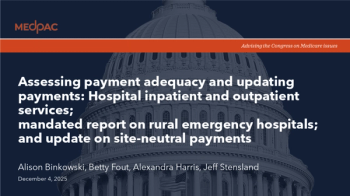
Overcoming hurdles to value-based care adoption
To transform the promise of value-based care into reality, the health care industry must truly work together and accelerate the implementation and adoption of this impactful care model
Over the past two decades,
The concept of value-based care is straightforward, and the potential benefits are significant. Value-based care arrangements can—and do—improve health care outcomes and reduce costs for patients. Additionally, the
Yet, as we approach the end of 2024, the widespread adoption of value-based care has not met those lofty expectations. According to a
Creating a value-based care model requires a significant administrative overhaul and large capital investment. The metrics underpinning value-based care—such as readmission rates, appointment timeliness, preventable infection rates, accounts receivable turnover, and patient-reported outcomes—are numerous and are continually evolving. Simply put, traditional practice management strategies must be drastically altered to manage and excel in the new value-based care model, necessitating extensive investments in information technology and human resources.
With ongoing staffing shortages and existing administrative burdens, physicians lack the resources necessary to navigate the complex setup required for value-based care. To transform the promise of value-based care into reality, the health care industry must truly work together and accelerate the implementation and adoption of this impactful care model by considering the following solutions, and payers are playing a large and effective role in making this transition a reality.
Greater adoption from commercial payers
While Medicare Advantage has heavily invested in value-based care, the commercial sector has been slower to make this shift. For PCPs, the necessary implementation changes for value-based care are more manageable if a significant portion of their patient population is covered by these arrangements. This is why CMS is aiming for the majority of Medicaid beneficiaries and all Medicare fee-for-service beneficiaries to be in value-based care arrangements by 2030.
And as the
Understanding how important provider networks are to the payer ecosystem, collaborating on how to make their networks successfully adopt value-based care has become increasingly important.
Industry enhancements in payment integrity
Claims processing and payment integrity have become growing administrative burdens for PCPs. Providers have experienced a
PCP incentives built into payment arrangements
Value-based care is based on incentive payments for quality patient care. However, additional incentives may be necessary to encourage widespread adoption among PCPs. Concerns about a national physician shortage are growing; the
In a previous role as an emergency physician at a community hospital, I observed that many PCPs struggled to manage the overhead costs required to run a small practice, let alone the added expenses of adhering to value-based care requirements. These financial challenges are driving physicians to
The impact of value-based care can significantly benefit all health care stakeholders, and it will require effort from everyone to make value-based care a reality. As a former practicing physician, I understand that the aim of delivering quality patient outcomes can be hindered by the paperwork and documentation that pull doctors away from patient care, but payers are moving in the right direction to reduce those administrative burdens and ultimately let doctors be doctors.
Timothy Garrett, M.D., is the Chief Medical Officer at
Newsletter
Stay informed and empowered with Medical Economics enewsletter, delivering expert insights, financial strategies, practice management tips and technology trends — tailored for today’s physicians.
















